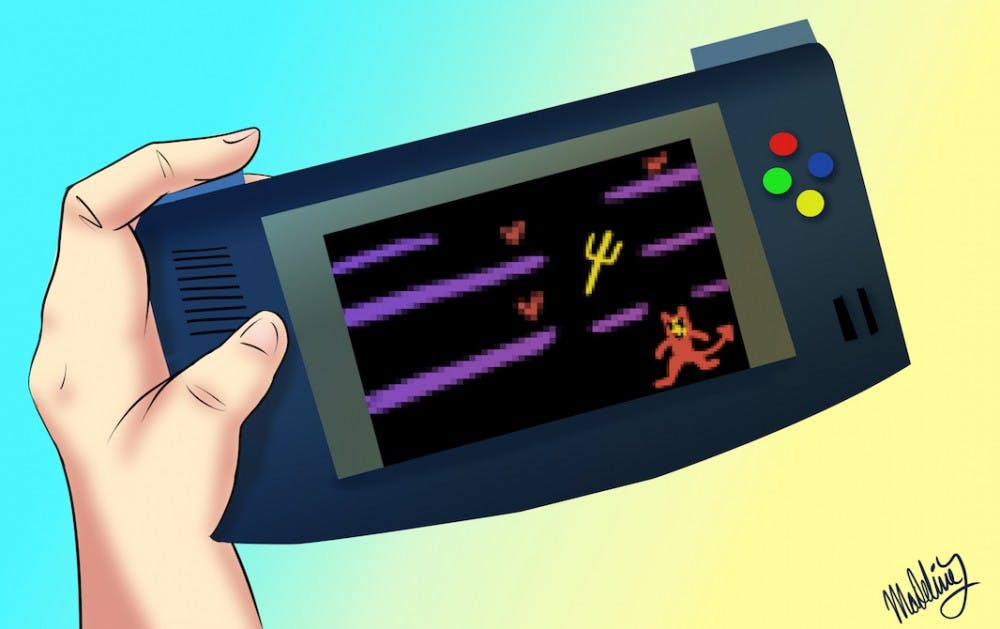Following the recent announcement that ASU will expand to downtown Mesa with a presence focused on the arts and technology, the future looks promising for the University's ever-growing game design program. Through the extension, the program can bring a more immersive education to students who are interested in entering the niche, competitive market of game design.
Yoshihiro Kobayashi, a lecturer and coordinator for the game certificate program in the School of Computing, Informatics and Decision Systems Engineering, said the new facility should have a clear focus on gaming rather than arts and media.
"There are many art centers on films and media already, so I expect something new," Kobayashi said. "A facility such as virtual reality, augmented reality, or mixed reality theater (is what he hopes for)."
According to a proposal for the intergovernmental agreement between the Arizona Board of Regents and the City of Mesa presented earlier in February, the downtown Mesa programs will focus on the intersection of film, media and gaming, with special attention paid to virtual reality and prototyping of new technology.
Kobayashi said the extension of such facilities would be well suited to the populated campuses of Tempe and downtown Phoenix, but noted that downtown Mesa has potential due to the accessibility of the light rail.
He said the placement of facilities should make use of the geographic characteristics that make Arizona attractive.
Brandon Bayles, a computer science sophomore who is in the game development certificate program, said he is excited that ASU is reevaluating its game design program because of the burgeoning gaming industry in the U.S. economy.
"As a student in the current game design program, I can tell you that the program is suffering through lack of faculty support," Bayles said. "There are many students who are interested in the courses but often times there is only one class time and location for them, making it difficult to fit into a schedule."
According to a 2014 report from the Entertainment Software Association, the "real annual growth rate of the U.S. video game industry was 9.7 percent for the period from 2009-2012." The report states that the gaming industry added more than $6 billion to the U.S. GDP in 2014.
Bayles said an entirely new facility, with faculty designated specifically for this program as well as the film and media programs, would give these departments the resources they need to provide students with a quality education.
"Instead of having professors who're trying to juggle computer science courses with game design courses, we'd get dedicated faculty who'll be able to provide a more thorough lecture," Bayles said.
Bayles said despite the current shortcomings, he is excited to see the gaming program, as well as other media arts programs, expand with the new facility, because students will benefit from a quality education in what he described as a niche job market.
The game design program draws connection between the industry to other fields such as medicine, math and biotechnology through projects like designing games that help teach linear algebra, according to the certificate's site.
In the new facility, students from the game design program as well as the media arts program will have the opportunity to collaborate with one another by combining both artistic principles.
"At least being a computer science student, I see a lot of my peers wanting to go down the gaming path, and I can see such a facility being very helpful with providing them with further tools and skills that are needed," said Meilyn Chen, a computer science and math sophomore.
Chen said having specialized facilities allows those who want to pursue or are interested in those disciplines to explore them in greater depth.
"Classes at ASU may touch on the things students really want to learn about, but having these content-specific locations would really allow students to delve deeper, and I think it would be very beneficial," Chen said. "By having more of these content-specific locations, ASU would be providing a wider range of students with the skills they want and need for their futures."
Reach the reporter at pthaung@asu.edu or follow @seaboiii on Twitter.
Like The State Press on Facebook and follow @statepress on Twitter.




